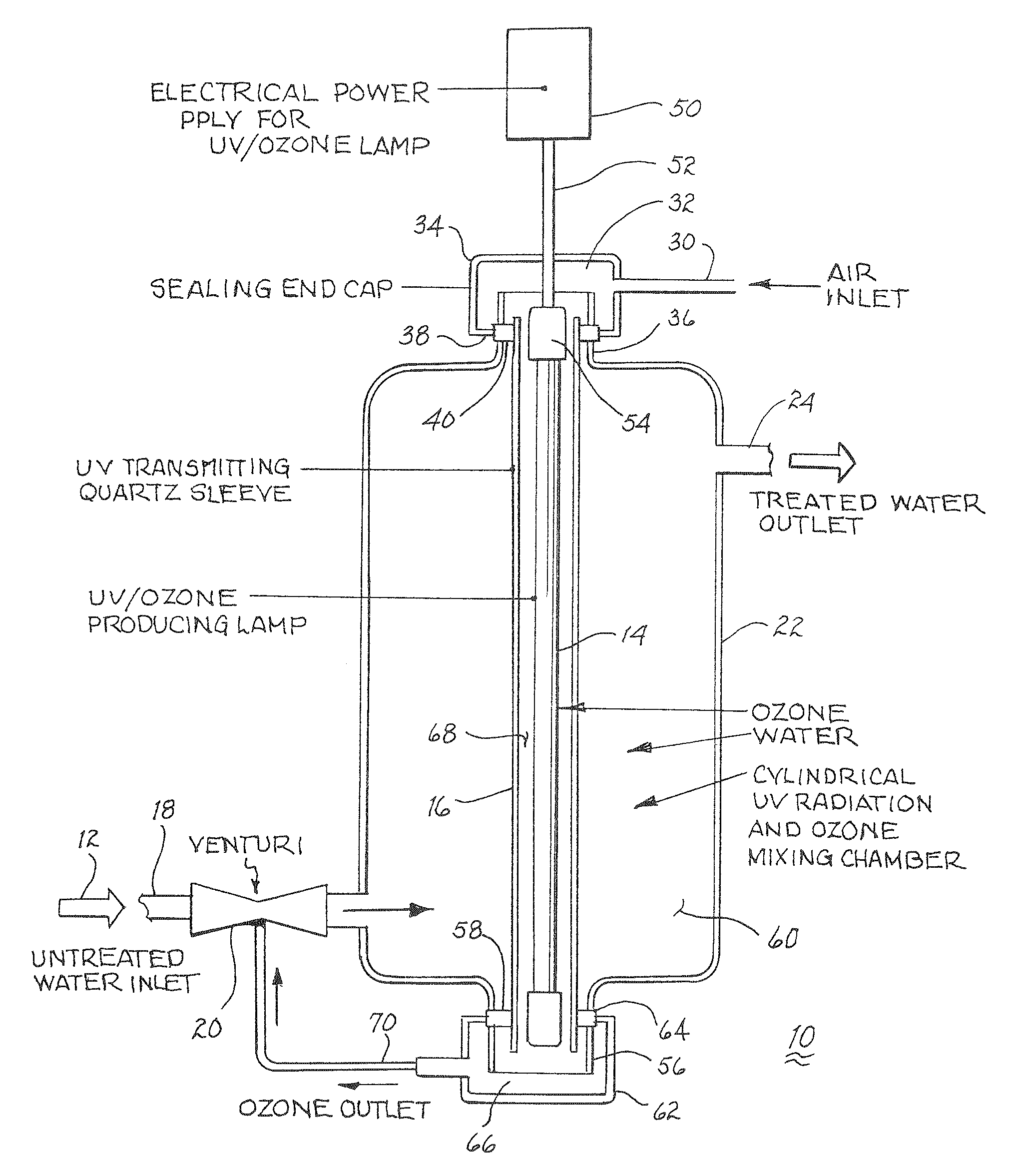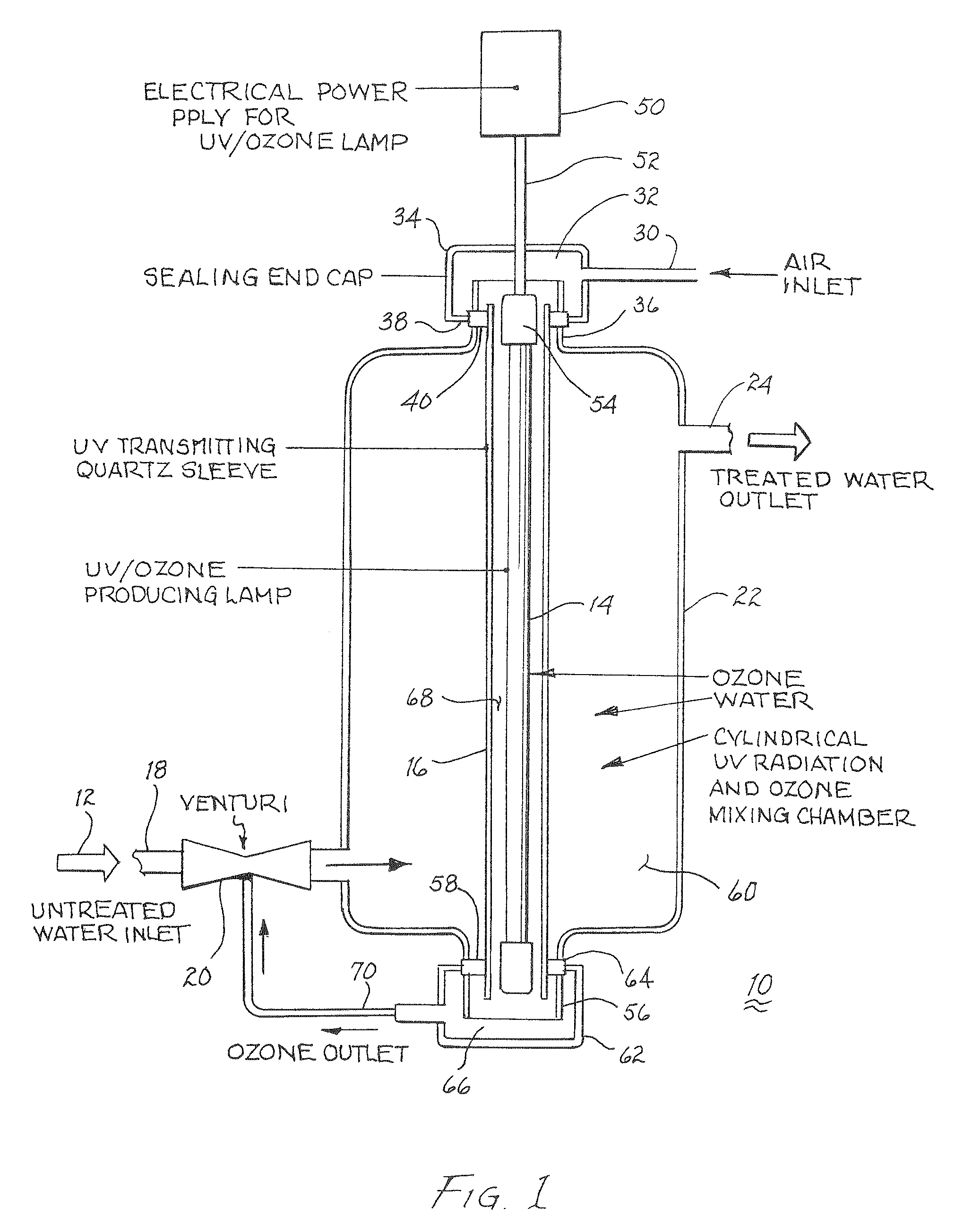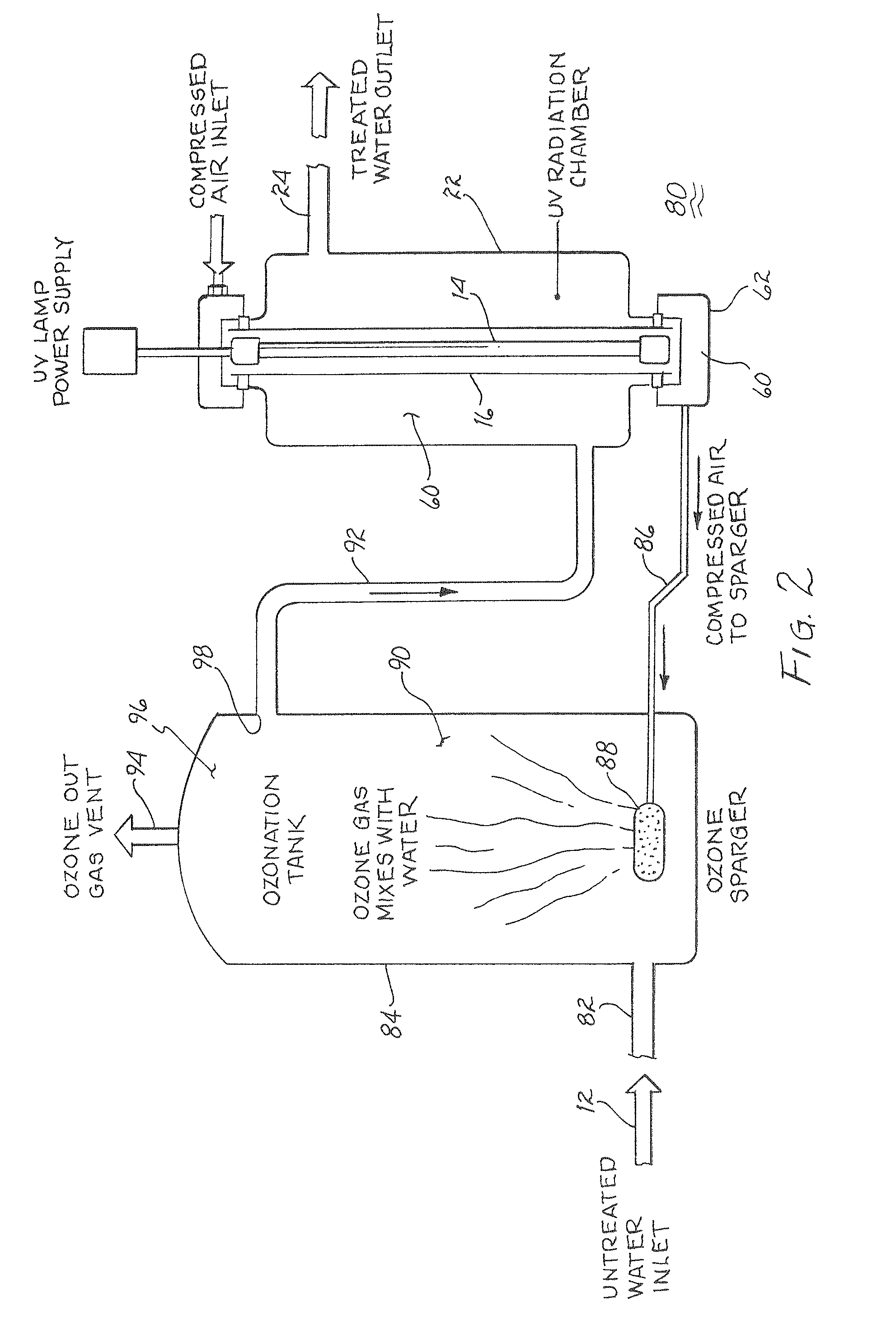Method and apparatus for reducing microorganisms in water
a technology of water microorganisms and apparatus, applied in the direction of disinfection, multi-stage water/sewage treatment, water/sewage treatment by oxidation, etc., can solve the problems of significant virus disinfection credit, and inconvenient use of free chlorin
- Summary
- Abstract
- Description
- Claims
- Application Information
AI Technical Summary
Benefits of technology
Problems solved by technology
Method used
Image
Examples
example 1
Test Organism: MS-2
Propagation and assay of MS-2 coliphage was performed in accordance with Thurston-Enriquez et al. (2003a). Expected UV inactivation was derived from the work of Thurston-Enriquez et al. (2003a). In that paper, the UV dose for 90%-99.99% inactivation for MS-2 coliphage is shown in Table 3 below.
TABLE 3UV doses for 90% to 99.99% inactivation of test viruses in BDFwater and groundwater at room temperature (from Thurston-Enriquezet al. (2003a)).UV dose (mJ / cm2) for inactivation levelVirusWater Type90%99%99.9%99.99%MS-2 phageBDFb235587119Feline calcivirusBDFb61626 36Grounda51321 29AdenovirusBDFb50109167 226cGrounda53103153 203caGround, treated (de-chlorinated) groundwaterbBuffered demand-free watercExtrapolated value, not achieved in bench-scale experiments, based on linear regression.
Ozone was generated by a corona discharge generator and injected into 4 L of dechlorinated tap water at room temperature and pH 7.6. The water was raised and maintained to an Oxidation Re...
PUM
| Property | Measurement | Unit |
|---|---|---|
| wavelengths | aaaaa | aaaaa |
| wavelengths | aaaaa | aaaaa |
| wavelength | aaaaa | aaaaa |
Abstract
Description
Claims
Application Information
 Login to View More
Login to View More - R&D
- Intellectual Property
- Life Sciences
- Materials
- Tech Scout
- Unparalleled Data Quality
- Higher Quality Content
- 60% Fewer Hallucinations
Browse by: Latest US Patents, China's latest patents, Technical Efficacy Thesaurus, Application Domain, Technology Topic, Popular Technical Reports.
© 2025 PatSnap. All rights reserved.Legal|Privacy policy|Modern Slavery Act Transparency Statement|Sitemap|About US| Contact US: help@patsnap.com



